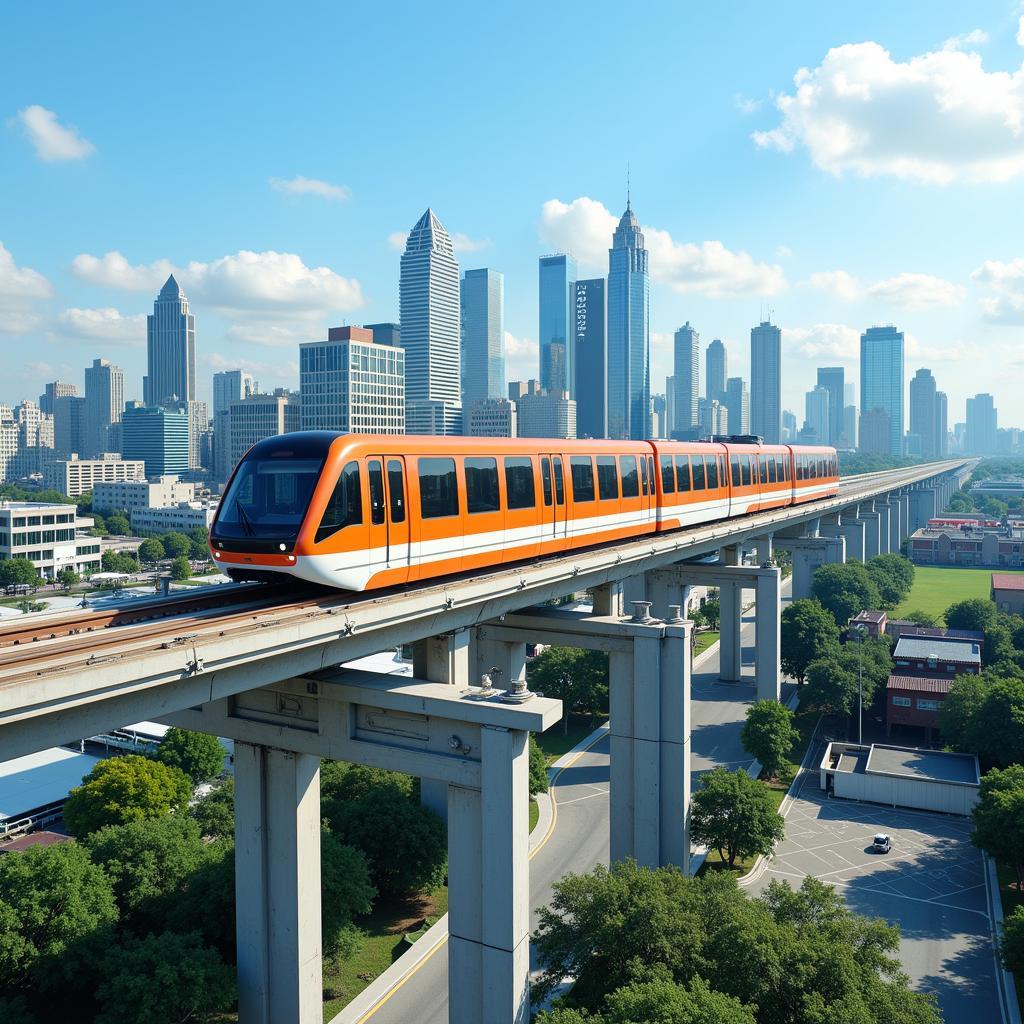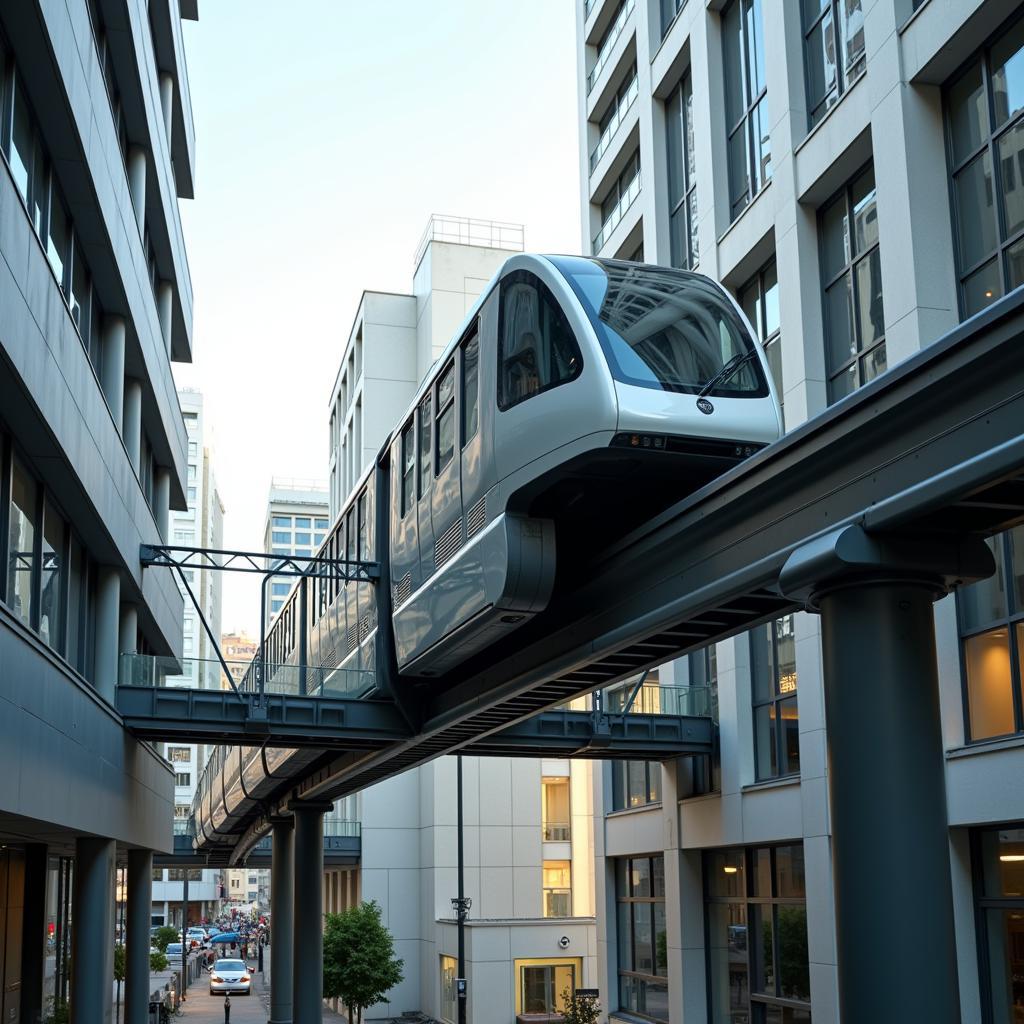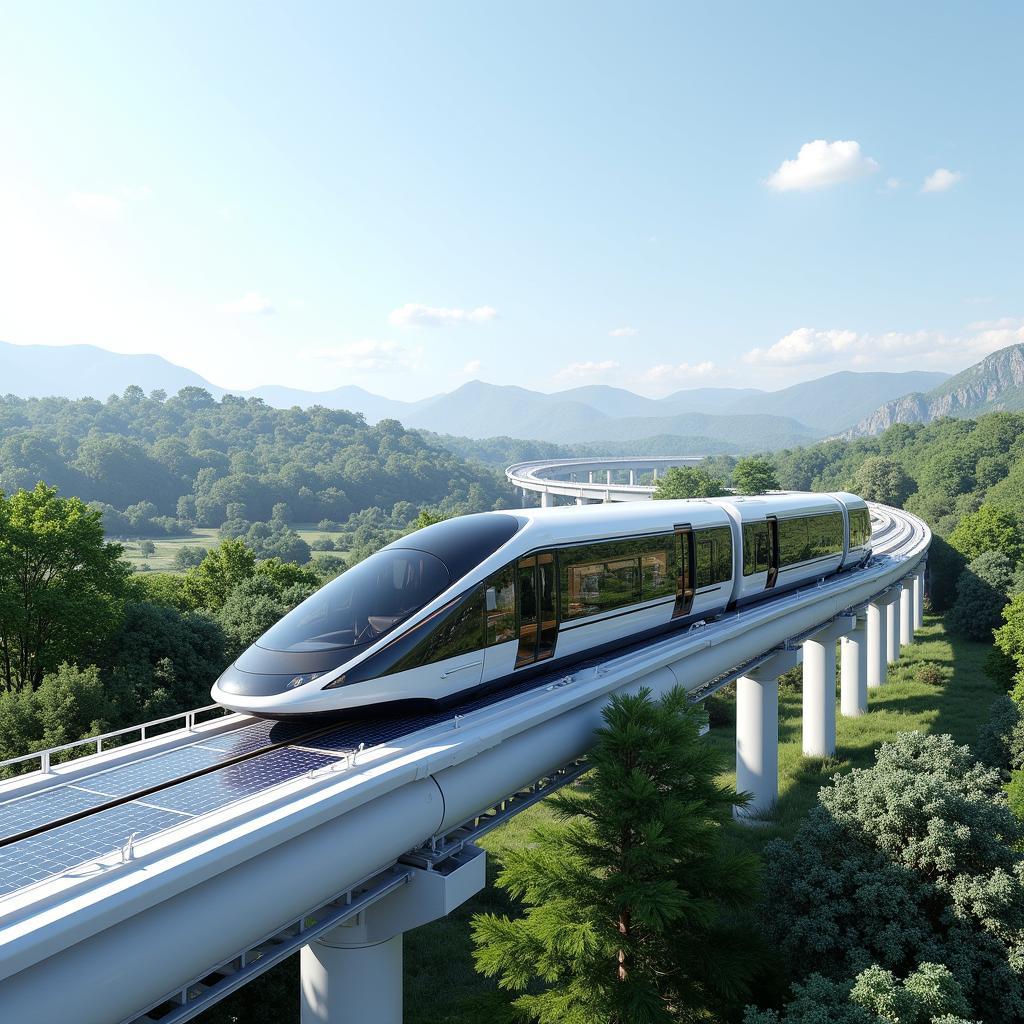Monorail Track, a single rail serving as the track for passenger or cargo vehicles, offers a unique and efficient transportation solution. From urban transit systems to amusement park rides, monorail technology has captured imaginations and provided practical solutions for moving people and goods. This article delves into the fascinating world of monorail track, exploring its history, various types, advantages, disadvantages, and future potential.
A Brief History of Monorail Track
The concept of monorail track dates back to the late 19th century, with early experimental systems emerging in Europe. These early attempts aimed to address the limitations of conventional railways, particularly in navigating challenging terrain. While some early monorail systems proved impractical, the idea persisted, fueled by the promise of a more efficient and streamlined transportation method.
Different Types of Monorail Track Systems
There are two main types of monorail track: straddle-beam and suspended. Straddle-beam systems, like the ones found in Walt Disney World, feature vehicles that straddle a large concrete beam. Suspended systems, as seen in Wuppertal, Germany, have vehicles hanging below the track. Each type has its advantages and disadvantages, making them suitable for different applications.
Straddle-Beam Monorail Track
Straddle-beam systems are often preferred for their stability and relative ease of construction. They are commonly used in amusement parks and for relatively short-distance urban transit systems. The track beam also provides a platform for utilities and maintenance access.
 Straddle-Beam Monorail System in Action
Straddle-Beam Monorail System in Action
Suspended Monorail Track
Suspended monorail systems offer a unique visual appeal, appearing to float effortlessly. They are often chosen for their smaller footprint, making them suitable for congested urban environments. The suspended design also allows for tighter turns and greater flexibility in navigating complex terrain.
 Suspended Monorail System in an Urban Environment
Suspended Monorail System in an Urban Environment
Advantages of Monorail Track
Monorail systems offer several benefits compared to traditional rail systems. They often require less land for right-of-way, can be built elevated to minimize disruption to existing infrastructure, and are generally quieter than traditional trains. Monorail track can also handle steeper grades and sharper turns than conventional railways, making them ideal for navigating challenging environments. They also offer a visually appealing alternative, enhancing the urban landscape.
Disadvantages of Monorail Track
Despite their advantages, monorail systems also face certain challenges. The specialized nature of the track makes switching between monorail and conventional rail lines difficult. Evacuating passengers in emergencies can be more complex, and the initial construction costs can be higher than for traditional rail systems. Additionally, the perceived lower capacity compared to traditional trains can be a limitation in high-demand areas.
The Future of Monorail Track
Despite the challenges, monorail track continues to be an area of innovation. Researchers are exploring new technologies and designs to improve efficiency, capacity, and safety. With advancements in materials science and engineering, monorail systems could play an even greater role in urban transportation in the future, particularly in densely populated areas and regions with challenging topography.
 Futuristic Monorail Track Concept Design
Futuristic Monorail Track Concept Design
Conclusion
Monorail track offers a distinctive and innovative approach to transportation. While it faces certain limitations, the ongoing advancements in technology and design continue to improve its potential. From its historical roots to its promising future, monorail track remains an exciting and dynamic field, offering a unique solution to the challenges of modern transportation.
FAQ
-
What is the main difference between straddle-beam and suspended monorail systems? Straddle-beam monorail trains run on top of a beam, while suspended systems hang below the track.
-
Are monorails faster than traditional trains? Monorail speeds are comparable to light rail systems but generally slower than high-speed rail.
-
Why are monorails often used in amusement parks? They are visually appealing, require less space, and can easily navigate complex layouts.
-
Are monorails considered environmentally friendly? They can be, especially when integrated with renewable energy sources. Electrically powered monorails produce less noise and air pollution than traditional combustion engine vehicles.
-
What is the future of monorail technology? Ongoing research focuses on increasing capacity, improving safety, and integrating with smart city technologies.
Need assistance? Contact us at Phone Number: 0902476650, Email: [email protected] Or visit our address: 139 Đ. Võ Văn Kiệt, Hoà Long, Bà Rịa, Bà Rịa – Vũng Tàu, Việt Nam. We have a 24/7 customer support team. Explore more of our transportation-related articles on our website for further insights.





